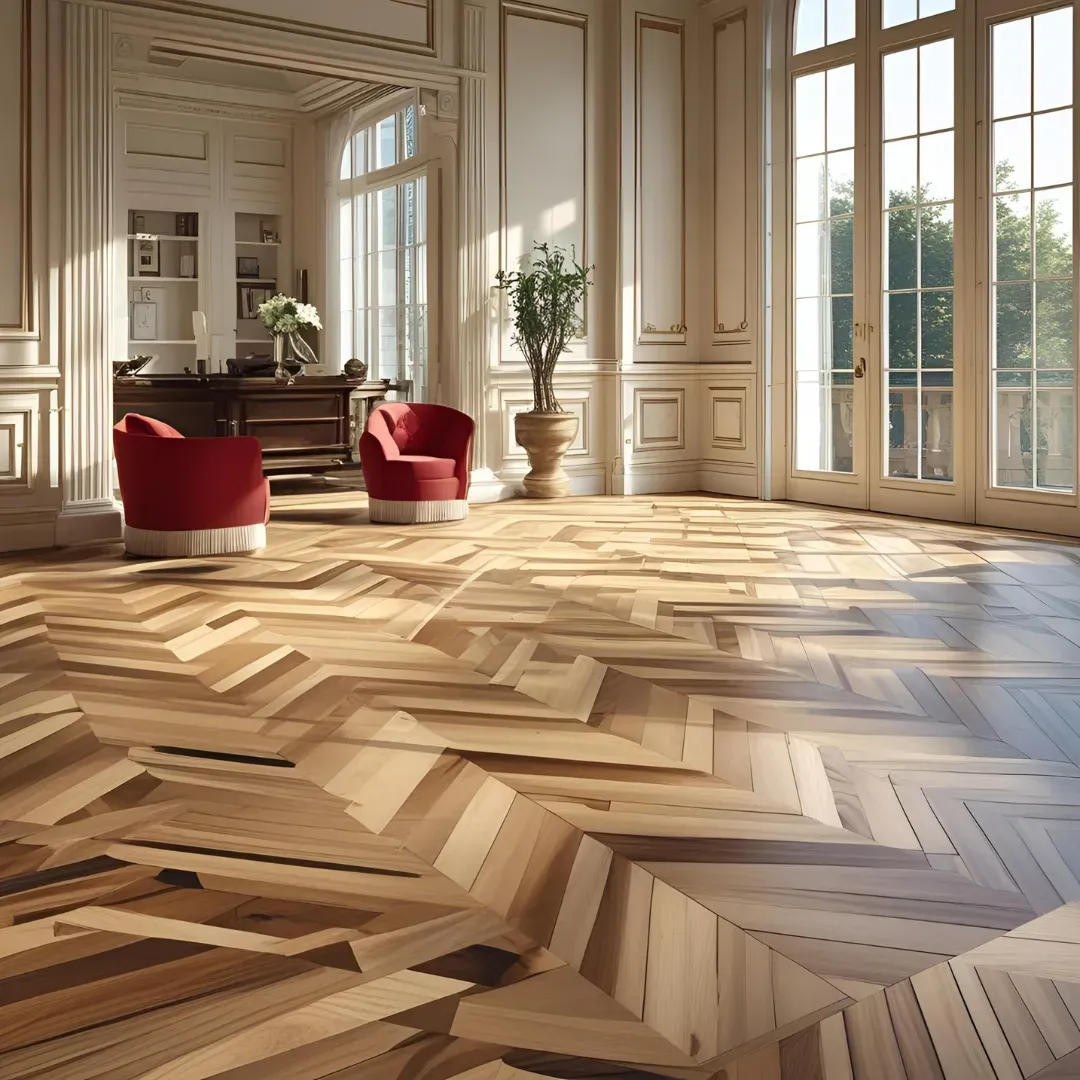Wooden flooring has long been valued for its natural beauty, durability, and timeless appeal. Among the many flooring options available today, parquet and industrial parquet stand out as two distinct solutions that combine functionality with aesthetics. While both are made from wood and share certain qualities, their construction, application, and overall appearance differ significantly. To make the right choice for your home or commercial project, it is important to understand what separates classic parquet from industrial parquet.
What Is Classic Parquet?
Parquet is one of the oldest and most elegant flooring options. Traditionally, it is made of solid wood pieces or engineered wood panels that can be arranged in various patterns. Popular designs include herringbone, chevron, basket weave, or simple strip installations. Parquet floors are associated with sophistication, often used in living rooms, dining rooms, and other representative areas.
Classic parquet can be divided into:
Solid Parquet – produced from one piece of wood, offering strength, the possibility of multiple sanding processes, and a long lifespan.
Engineered Parquet – made of several layers of wood, with a hardwood top layer and stable base layers, reducing the risk of warping and making installation easier.
The main characteristics of parquet are its refined look, variety of patterns, and warmth underfoot. However, it is usually more sensitive to heavy loads and therefore better suited for residential or lightly used spaces.
What Is Industrial Parquet?
Industrial parquet, also called vertical lamella parquet, was originally developed as a practical solution for workshops, factories, and other high-traffic areas. It is created by gluing narrow wooden lamellas vertically, which results in a highly durable and resistant surface. Because the wood fibers stand upright, industrial parquet can withstand heavy use, impacts, and frequent cleaning.
Unlike classic parquet, industrial parquet is not chosen primarily for its decorative value, but rather for functionality. Its appearance is more rustic, with visible variations and strong texture. However, many modern architects and homeowners now appreciate this raw aesthetic, using industrial parquet in loft apartments, offices, and even modern living spaces to create a unique design statement.
Key Differences Between Parquet and Industrial Parquet
Appearance
Parquet: Elegant, smooth, and often installed in decorative patterns. Ideal for creating a refined interior style.
Industrial Parquet: Rustic, textured, and less uniform. Suitable for modern, industrial, or minimalist designs.
Durability
Parquet: Durable but less resistant to extreme loads and wear. Requires careful maintenance.
Industrial Parquet: Extremely robust, designed for heavy traffic and long-term use.
Applications
Parquet: Best suited for residential spaces, offices, and areas where design and aesthetics are a priority.
Industrial Parquet: Common in workshops, public buildings, commercial spaces, and increasingly in modern homes seeking a unique style.
Maintenance
Parquet: Needs regular cleaning and periodic refinishing or oiling to maintain its beauty.
Industrial Parquet: Can be sanded many times due to its thickness, making it very long-lasting.
Price and Installation
Parquet: Generally higher in cost due to the decorative finish and complex installation patterns.
Industrial Parquet: Often more cost-effective, especially considering its lifespan and durability.
Which One Should You Choose?
The decision between parquet and industrial parquet depends on your priorities. If you are looking for elegance, warmth, and a wide choice of patterns, parquet is the best option. It transforms a room into a sophisticated space and adds timeless charm. On the other hand, if durability, practicality, and a unique raw look are more important, industrial parquet may be the ideal solution.
Many designers today combine both options in different parts of a project: parquet for living areas where comfort and design are central, and industrial parquet for spaces where strength and resistance are essential.
Conclusion
Both parquet and industrial parquet showcase the beauty and versatility of wood, but each serves a different purpose. Parquet is synonymous with elegance and traditional craftsmanship, while industrial parquet represents resilience and modern industrial style. By understanding the differences in appearance, durability, maintenance, and application, you can make an informed choice that matches both your aesthetic vision and functional requirements.




